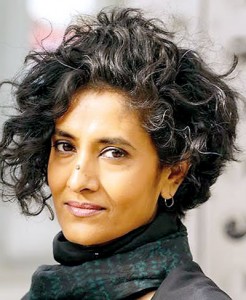What it is to be a daughter of India
View(s):
Somini Sengupta
Somini Sengupta has been running the numbers for a while now. “Every month for the next several years, 1 million Indians are turning 18,” the author told a journalist at The Guardian. Her book, ‘The End of Karma: Hope and Fury Among India’s Young’ would set out to take a look at this phenomenon. The numbers were close to overwhelming:“India has the largest concentration of young people in the world at any time in recorded history – 420 million Indians are between the ages of 15 and 34.”
Sengupta left India as a young child in 1975. Thirty years later, she returned as the New Delhi bureau chief for The New York Times. In an interview, she would tell NPR that the 21st century country she found as a journalist was nothing like the one her parents grew up in.
This interested Sengupta for more than one reason. She could see immediately that it would have a bearing on everything from migration to efforts to combat climate change. She also noted that Indian women were having fewer children, and that as a result, the country was seeing the percentage of young children in the population steadily falling. At the other end of the spectrum, the percentage of elderly people was fairly small compared to many other countries. “Of course it’s an incredible boon for any country to have this so-called “demographic dividend”, but it can also create very high expectations, huge demands and, also, frustrations when expectations are not met,” Sengupta told journalists.
Sengupta is a reporter herself – a foreign correspondent for The New York Times, she has reported from a Himalayan glacier, a Congo River ferry, the streets of Baghdad and Mumbai and many places in between. She is the winner of the 2003 George Polk Award for Foreign Reporting, and was the first Indian-American bureau chief for The New York Times in India.
But becoming a mother also changed Sengupta’s perspective, and in her book she takes a hard look at how contemporary India treats its women. “It was something that I really thought about because my daughter is a daughter of India and I have been struck by how this audacious promise was made at independence to treat women as equals, but how that promise has not really been met yet,” she says.
Another issue she highlights is that of child malnutrition: “In such a huge economy that’s been growing at 6 or 7% a year for so many years, it is really puzzling why 30% of children under five remain clinically stunted. The inability to address child hunger is in my view one of the most shocking facts of India’s economic growth.”
But Sengupta isn’t without hope. She says she has been deeply inspired by the people she met throughout her research. “I call this ‘The End Of Karma’ because the people I write about – they’re all trying to overcome their past. They were born with one destiny. They are trying to make another. And they’re all stories of incredible grit and resilience and great hope but also a bit of fury – quite a bit of fury, which is why the subtitle of the book is ‘Hope And Fury Among India’s Young.’”


